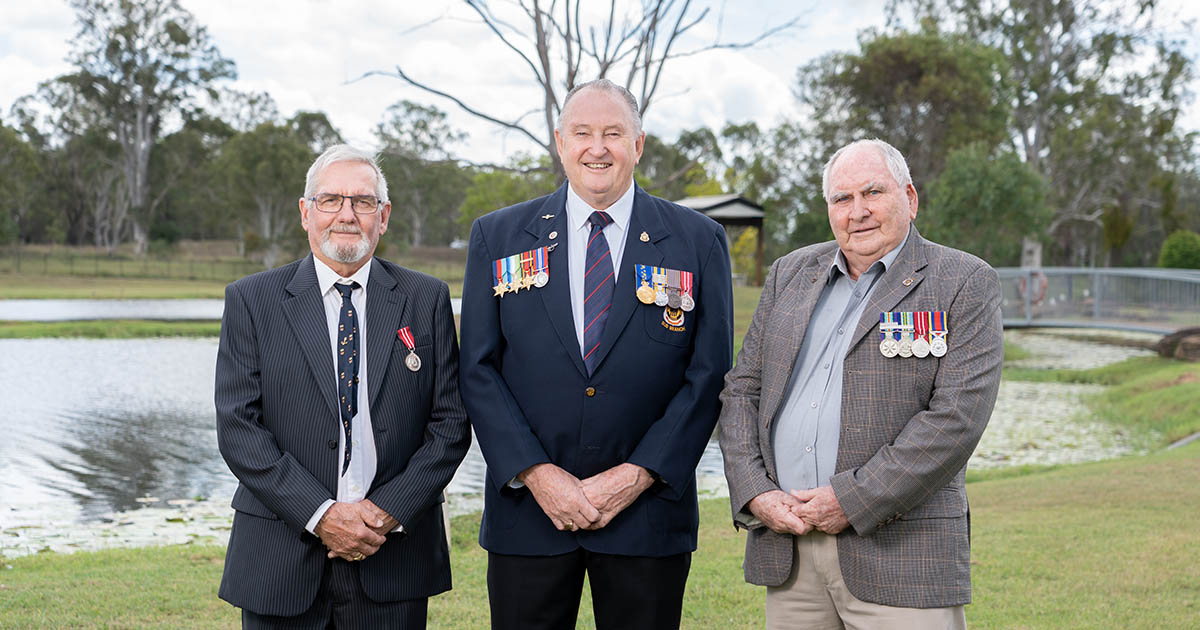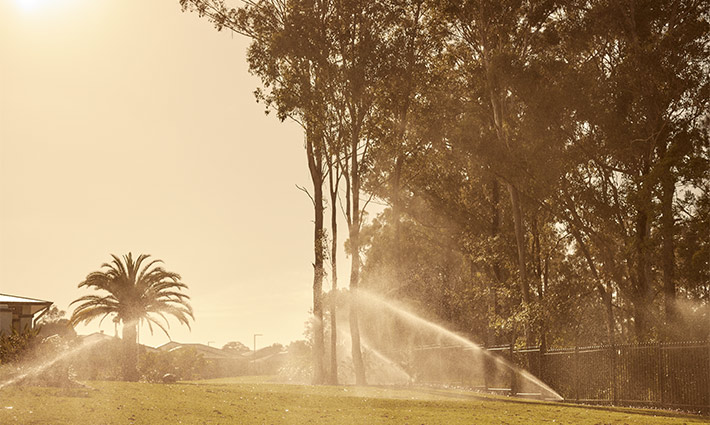History has a new facet at Opal

Residents at Opal by Living Gems live on the border of a significant piece of Queensland’s World War Two history. In this feature, we uncover the history of Camp Cable and speak to three men who served in each of our armed services.
Bill Malkin, Royal Australian Air Force (1966-2011)
When Bill was 16, he thought he wanted to be a chemical engineer. “Not that I really knew what that was,” he said.
“We were living in Townsville and my parents certainly didn’t have the means to send me to university.”
That’s when the father of his girlfriend at the time, an air force recruiter, suggested that he consider a career in the service.
“I think he was trying to get rid of me!” he joked. “The truth is that it was a great opportunity. I started as a cadet radio apprentice.”
Despite not liking high school, Bill discovered that he took to university study and found that he also enjoyed life in the air force.
“It was a great career that has taken me to all states of Australia and an extensive career working in conjunction with the US Air Force,” he said.
In 1972 he was stationed in Denver, Colorado where he met his wife. From there Bill moved to Georgia and then Las Vegas before being stationed in California where he worked on the avionics and software for the F/A-18 Hornets. A variation of that aircraft was used in the film Top Gun: Maverick.
Bill, together with his family, returned to Australia as a commissioned officer and retired as Group Captain. Moving to Opal by Living Gems has given Bill more time to dedicate to the Jimboomba RSL where he is Vice President and RSL state delegate.
His professional twin passions are veterans support service and school visits where he shares the importance of Anzac Day to a new generation.
John Lacey, The Australian Army (1961-1967)
As a young man who was at a loose end after an apprenticeship fell through, John looked at the army to give him the kickstart he needed in life.
“I highly recommend it,” he said. “It helped me get disciplined and learn skills along the way.”
John served for two years in Malaya from 1963 and he was there when the nation became the independent state we know today as Malaysia. Just three years earlier, Commonwealth forces supported the Malay government to battle Communist insurgents.
“I was in the 3rd Battalion RAR and we conducted patrols on the Thai border and saw a little bit of action in Sarawak because Indonesia didn’t support that region in Borneo becoming part of Malaysia,” he said.
The latter part of John’s army career saw him stationed at the Land Warfare Centre at Canungra which took him past the Logan Village Hotel.
“I’d carpool with a couple of other fellows, and we’d stop there for a round of beers on the way home from work,” he said.
Tony Aitken, The Royal Australian Navy (1968-1978)
Growing up in the La Trobe Valley in Victoria, there was only one real employer in town and that was at the local power plant, but Tony wanted to do something different.
“I was a country boy, but ended up joining the Navy,” he said.
Tony served on a number of different ships including the frigate HMAS Diamantina which is now on display to the public at the drydock at Brisbane’s Southbank.
“She saw a bit of action in her time during the Second World War, but I didn’t,” he said. “By the time I served, she was a naval research vessel based in Fremantle.”
Tony enjoyed his time in the navy but notes with a little irony that after his time at sea, he ended up working for the State Electricity Commision of Victoria where his mates, who joined straight out of school, became his bosses.
“But they didn’t get to see or do the things that I did,” he said.
About Camp Cable
Logan Village, known for its tranquil bushland setting, has a population of less than 5000 people today, but it was once home to more than 20,000.
In 1941, Australia had already been at war for two years, and with Britain facing an existential threat on its shores, little support could be expected from the mother country to defend our nation.
Following the bombing of Pearl Harbour on 7 December 1941, Australia called on the US for help and the first American troops arrived in Brisbane three days before Christmas.
Initially based in Adelaide, the 32nd US Infantry Division was transported to Queensland in Liberty-class cargo ships. While enroute, one of the ships was torpedoed by a Japanese submarine. Sergeant Gerald O Cable from the 126th Infantry was killed and the new camp at Logan Village was named in his honour.
Camp Cable was huge, encompassing roughly 30 square kilometres between Quinzeh Creek Road at Logan Village and Plunkett Road in Tamborine Village. At the southern end of the camp was the 155th Station Hospital.
A memorial to Camp Cable can be found at the Logan Village RSL, located next door to Opal by Living Gems.







